Seagate NAS 4-Bay with Marvell ARMADA 370 Review
by Ganesh T S on July 24, 2014 8:30 AM ESTEncryption Support Evaluation - Single Client CIFS Access
Consumers looking for encryption capabilities can opt to encrypt a iSCSI share with TrueCrypt or some in-built encryption mechanism in the client OS. However, if requirements dictate that the data must be shared across multiple users / computers, relying on encryption in the NAS is the best way to move forward. Most NAS vendors use the industry-standard 256-bit AES encryption algorithm. One approach is to encrypt only a particular shared folder while the other approach is to encrypt the full volume. Seagate supports only volume-level encryption for now in NAS OS.
On the hardware side, encryption support can be in the form of specialized hardware blocks in the SoC (common in ARM / PowerPC based NAS units). In x86-based systems, accelerated encryption support is dependent on whether the AES-NI instruction is available on the host CPU. The ARMADA 370 SoC does have cryptography accelerator blocks. We created an encrypted volume and set up a CIFS share to repeat our Intel NASPT / robocopy benchmarks. The results are presented in the graphs below.
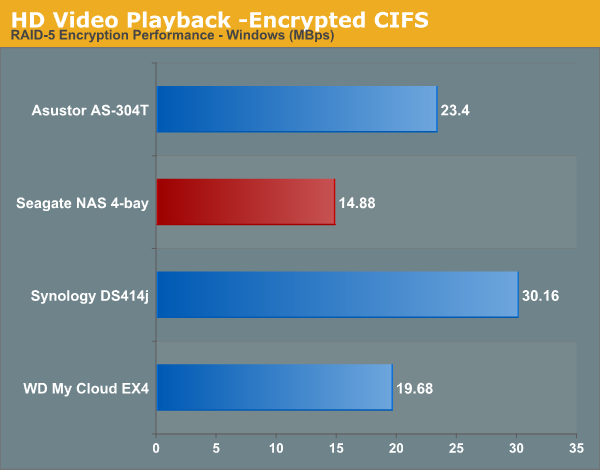
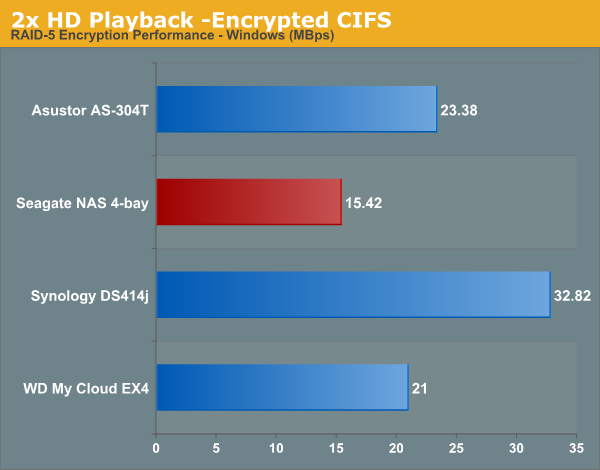

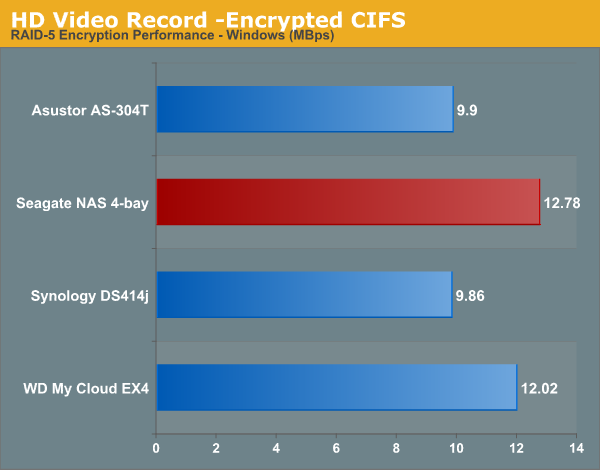
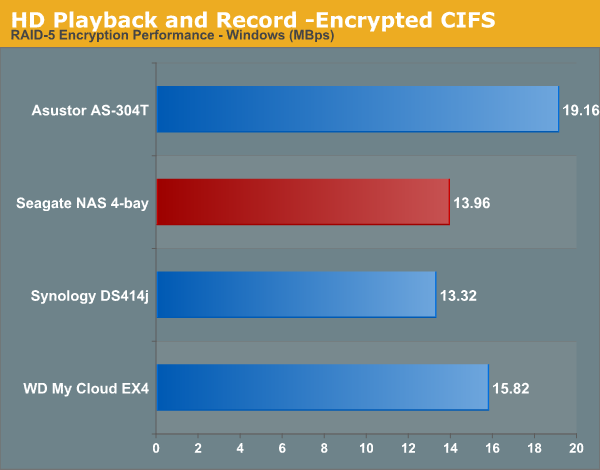

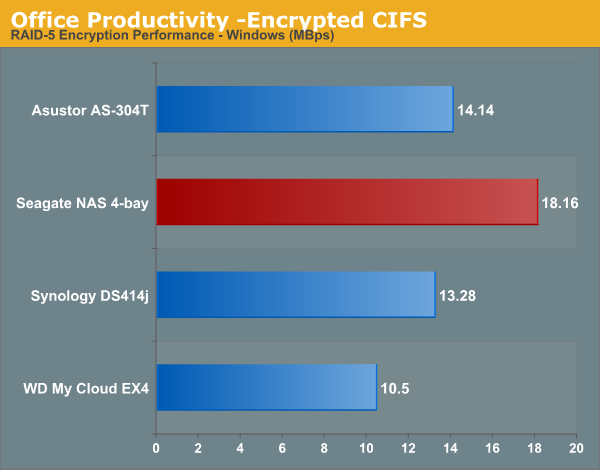
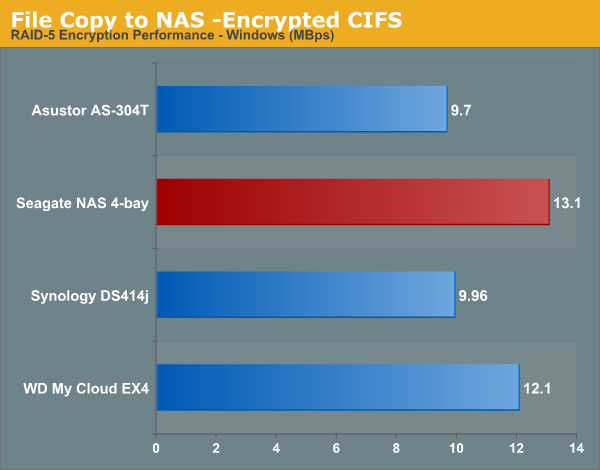
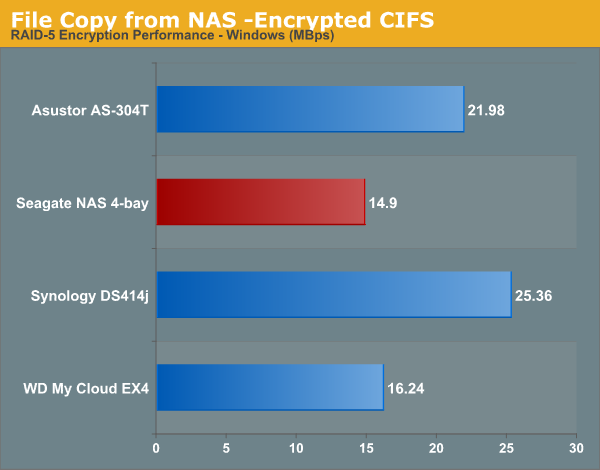

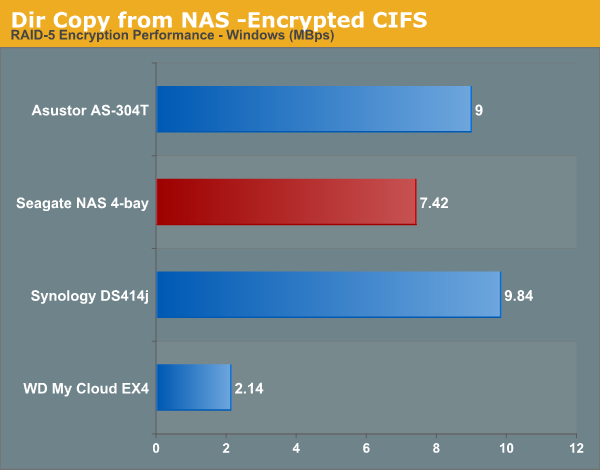
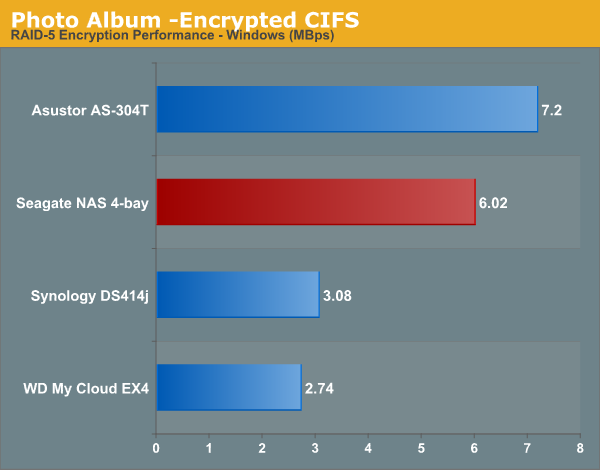
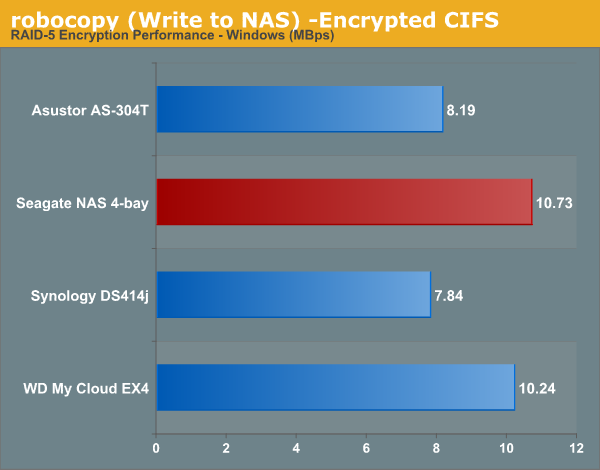
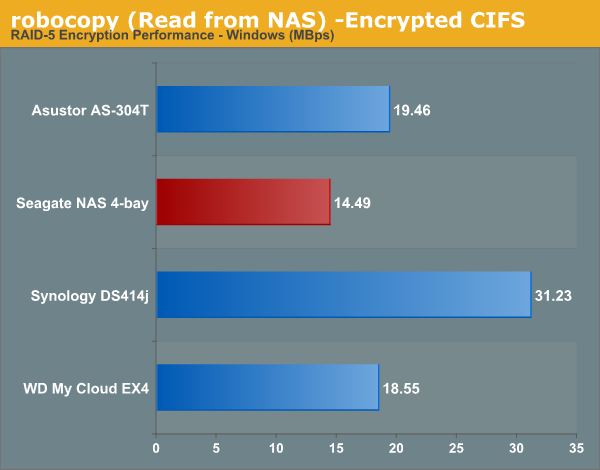
The Seagate NAS 4-bay excels in write heavy workloads, but reads are much worse off compared to the competition.










19 Comments
View All Comments
MadMan007 - Thursday, July 24, 2014 - link
Whoa, you mean a motherboard that costs more than this entire NAS performs better? SHOCKING!JeffFlanagan - Thursday, July 24, 2014 - link
Thanks Ganesh and others who commented on the cooling.harshw - Thursday, July 24, 2014 - link
Ganesh, I can attest to the fact that LaCie's fan design on their 5Big boxes for example - isn't really good for thermals. Like I commented earlier, I had a LaCie 5Big NAS Pro consistently overheat here in California where the ambient room temps can easily rise to 80F. I replaced the 120mm Noctua with a 150mm Thermaltake and also cut out the fan grill. It worked but the LaCie RAID config was already broken and no amount of recovery would help.ganeshts - Thursday, July 24, 2014 - link
That is disappointing to hear. I have the 5big Pro running without issues, but I have it perched on a shelf open on all four sides (basically a garage rack converted to hold stuff) where there is plenty of air-flow. One issue with the 5big box is that you have to make sure the underside is pretty clear (air intake is through that).That said, I do have more confidence in the NAS 4-bay, as the air is being pulled in through the front side of the unit. But, then, again, the NAS 4-bay doesn't have a metal body, so some heat loss through conduction will be missed.
beginner99 - Friday, July 25, 2014 - link
With these huge RAID-Rebuild times greatly increasing the risk of a second drive failure, wouldn't it make sense to add a dedicated chip that speeds this up? This would even help during normal operation?Zan Lynx - Friday, July 25, 2014 - link
As far as I know, no current hardware is limited by the CPU when doing RAID rebuild. It is always the amount of time that it takes to read and write so many terabytes of data.Now maybe if the drive bays were fitted with SSDs it would be a problem.
jabber - Friday, July 25, 2014 - link
From looking at recent tests and from my own kit at home it really looks like you need around 500MHz of ARM CPU power per 20-22MBps of data pumped down the cable.Zan Lynx - Friday, July 25, 2014 - link
Maybe the NAS builders should start using AMD Bobcat. My little home server built on a E-350 can fill a gigabit Ethernet link.wintermute000 - Sunday, July 27, 2014 - link
I agree. heck even Bill us the cost difference, what 50 more or whatever for a real cpu like a celeron